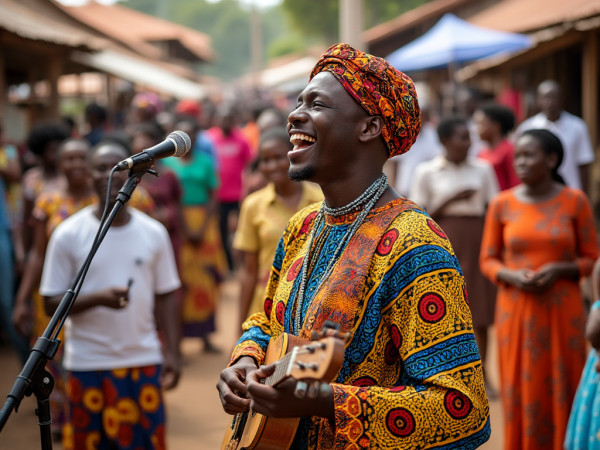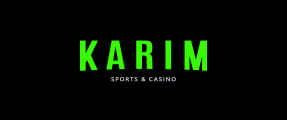Upper Guinea Creole (Crioulo) in Guinea-Bissau: A Language of Identity and Culture
작성자 정보
- 넥센가즈아 작성
- 작성일
컨텐츠 정보
- 187 조회
- 목록
본문
Upper Guinea Creole, or *Crioulo*, spoken in Guinea-Bissau, is a language with a rich historical and cultural heritage. This language emerged as a blend of Portuguese and local African languages, reflecting both colonial influences and indigenous roots. Crioulo plays a central role in communication, culture, and identity in Guinea-Bissau. This article explores the origins, linguistic features, social functions, and cultural impact of Crioulo in the country.

1. Origins and Historical Background
The formation of Crioulo in Guinea-Bissau began in the 15th century when Portuguese traders arrived on the West African coast. Guinea-Bissau was a significant port for Portugal, particularly in the transatlantic slave trade. The Portuguese language blended with local African languages to form a new pidgin, which later developed into Crioulo. This hybrid language served as a practical communication tool between Portuguese colonists and local African communities, becoming a bridge across cultures.
2. Linguistic Features of Crioulo
Guinea-Bissau Crioulo is rooted in Portuguese but has distinct linguistic traits, making it unique in structure and phonology:
- **Simplified Grammar**: Crioulo has reduced the complex grammatical structures of Portuguese. Verb conjugations, for instance, are minimal, with present tense often used universally to simplify expression.
- **Vocabulary Fusion**: Although Portuguese is the base, Crioulo incorporates many words from African languages like Mandinka, Balanta, and Fula. These loanwords reflect local customs and regional expression, adding to the language’s distinct identity.
- **Pronunciation and Intonation**: Crioulo features distinctive sounds and rhythms, influenced by the region’s multicultural background. Contractions are common, creating a unique cadence that resonates with both Portuguese roots and African phonetic patterns.
3. Social Role and Function
Crioulo plays a significant role beyond just communication; it is a unifying force and symbol of identity in Guinea-Bissau. Although Portuguese is the official language, Crioulo is widely spoken in various social contexts and has multiple social functions:
- **Everyday Communication**: Around 44% of Guinea-Bissau’s population speaks Crioulo. While Portuguese is mainly used by the educated elite, Crioulo is preferred in daily conversations, serving as the primary language of communication for most people.
- **Cultural Identity**: Crioulo holds symbolic value as a marker of national pride and cultural heritage. Its usage grew during the fight for independence, representing resistance to colonialism and a distinct cultural identity separate from Portuguese influence.
- **Unifying Tool**: In a country with diverse ethnic and linguistic backgrounds, Crioulo unites various communities. It fosters social cohesion and bridges communication gaps, allowing people from different groups to connect through a shared language.
4. Crioulo in Culture and the Arts
Crioulo significantly influences Guinea-Bissau’s cultural expression in music, literature, and cinema:
- **Music**: Crioulo is the primary language used in traditional and contemporary music in Guinea-Bissau. Lyrics often express humor, social critique, and cultural themes, particularly in *Gumbe*, a popular polyrhythmic music style that combines local sounds with Crioulo lyrics.
- **Literature**: Guinea-Bissauan writers use Crioulo to depict daily life, customs, and societal issues, creating a unique literary tradition that resonates with the local population and reflects shared experiences.
- **Film**: Director Flora Gomes, an internationally acclaimed filmmaker, uses Crioulo in his films to portray Guinea-Bissau’s historical struggles and cultural identity. His work highlights Crioulo as a tool for storytelling and preserving local heritage.
5. Challenges and the Future of Crioulo
Although Crioulo remains influential in Guinea-Bissau, it faces several challenges as the country’s linguistic landscape changes:
- **Educational Gap**: Portuguese is the language of instruction in schools, which may lessen Crioulo’s relevance among younger generations. This creates a language gap that can lead to educational disparities, especially in rural areas where Crioulo is dominant.
- **Globalization and Language Shift**: The growing influence of foreign languages like English and French may weaken Crioulo’s status. This shift might lead to linguistic blending, potentially diluting Crioulo’s distinct characteristics.
- **Digital Adaptation**: The internet has increased Crioulo’s visibility, especially on social media. While this digital presence offers opportunities for language preservation and modernization, it also raises the need for standardization to support broader communication.
Conclusion
Crioulo in Guinea-Bissau is more than just a language; it is a profound symbol of identity, a tool for unity, and a medium for cultural expression. Despite Portuguese being the official language, Crioulo connects diverse communities across the country and plays an essential role in Guinea-Bissauan identity. Its prominence in music, literature, and film further cements its importance in preserving and promoting local culture. Maintaining and promoting Crioulo will be crucial for safeguarding Guinea-Bissau’s linguistic diversity and reinforcing its unique cultural identity.


1. Origins and Historical Background
The formation of Crioulo in Guinea-Bissau began in the 15th century when Portuguese traders arrived on the West African coast. Guinea-Bissau was a significant port for Portugal, particularly in the transatlantic slave trade. The Portuguese language blended with local African languages to form a new pidgin, which later developed into Crioulo. This hybrid language served as a practical communication tool between Portuguese colonists and local African communities, becoming a bridge across cultures.
2. Linguistic Features of Crioulo
Guinea-Bissau Crioulo is rooted in Portuguese but has distinct linguistic traits, making it unique in structure and phonology:
- **Simplified Grammar**: Crioulo has reduced the complex grammatical structures of Portuguese. Verb conjugations, for instance, are minimal, with present tense often used universally to simplify expression.
- **Vocabulary Fusion**: Although Portuguese is the base, Crioulo incorporates many words from African languages like Mandinka, Balanta, and Fula. These loanwords reflect local customs and regional expression, adding to the language’s distinct identity.
- **Pronunciation and Intonation**: Crioulo features distinctive sounds and rhythms, influenced by the region’s multicultural background. Contractions are common, creating a unique cadence that resonates with both Portuguese roots and African phonetic patterns.
3. Social Role and Function
Crioulo plays a significant role beyond just communication; it is a unifying force and symbol of identity in Guinea-Bissau. Although Portuguese is the official language, Crioulo is widely spoken in various social contexts and has multiple social functions:
- **Everyday Communication**: Around 44% of Guinea-Bissau’s population speaks Crioulo. While Portuguese is mainly used by the educated elite, Crioulo is preferred in daily conversations, serving as the primary language of communication for most people.
- **Cultural Identity**: Crioulo holds symbolic value as a marker of national pride and cultural heritage. Its usage grew during the fight for independence, representing resistance to colonialism and a distinct cultural identity separate from Portuguese influence.
- **Unifying Tool**: In a country with diverse ethnic and linguistic backgrounds, Crioulo unites various communities. It fosters social cohesion and bridges communication gaps, allowing people from different groups to connect through a shared language.
4. Crioulo in Culture and the Arts
Crioulo significantly influences Guinea-Bissau’s cultural expression in music, literature, and cinema:
- **Music**: Crioulo is the primary language used in traditional and contemporary music in Guinea-Bissau. Lyrics often express humor, social critique, and cultural themes, particularly in *Gumbe*, a popular polyrhythmic music style that combines local sounds with Crioulo lyrics.
- **Literature**: Guinea-Bissauan writers use Crioulo to depict daily life, customs, and societal issues, creating a unique literary tradition that resonates with the local population and reflects shared experiences.
- **Film**: Director Flora Gomes, an internationally acclaimed filmmaker, uses Crioulo in his films to portray Guinea-Bissau’s historical struggles and cultural identity. His work highlights Crioulo as a tool for storytelling and preserving local heritage.
5. Challenges and the Future of Crioulo
Although Crioulo remains influential in Guinea-Bissau, it faces several challenges as the country’s linguistic landscape changes:
- **Educational Gap**: Portuguese is the language of instruction in schools, which may lessen Crioulo’s relevance among younger generations. This creates a language gap that can lead to educational disparities, especially in rural areas where Crioulo is dominant.
- **Globalization and Language Shift**: The growing influence of foreign languages like English and French may weaken Crioulo’s status. This shift might lead to linguistic blending, potentially diluting Crioulo’s distinct characteristics.
- **Digital Adaptation**: The internet has increased Crioulo’s visibility, especially on social media. While this digital presence offers opportunities for language preservation and modernization, it also raises the need for standardization to support broader communication.
Conclusion
Crioulo in Guinea-Bissau is more than just a language; it is a profound symbol of identity, a tool for unity, and a medium for cultural expression. Despite Portuguese being the official language, Crioulo connects diverse communities across the country and plays an essential role in Guinea-Bissauan identity. Its prominence in music, literature, and film further cements its importance in preserving and promoting local culture. Maintaining and promoting Crioulo will be crucial for safeguarding Guinea-Bissau’s linguistic diversity and reinforcing its unique cultural identity.

관련자료
댓글 0
등록된 댓글이 없습니다.






